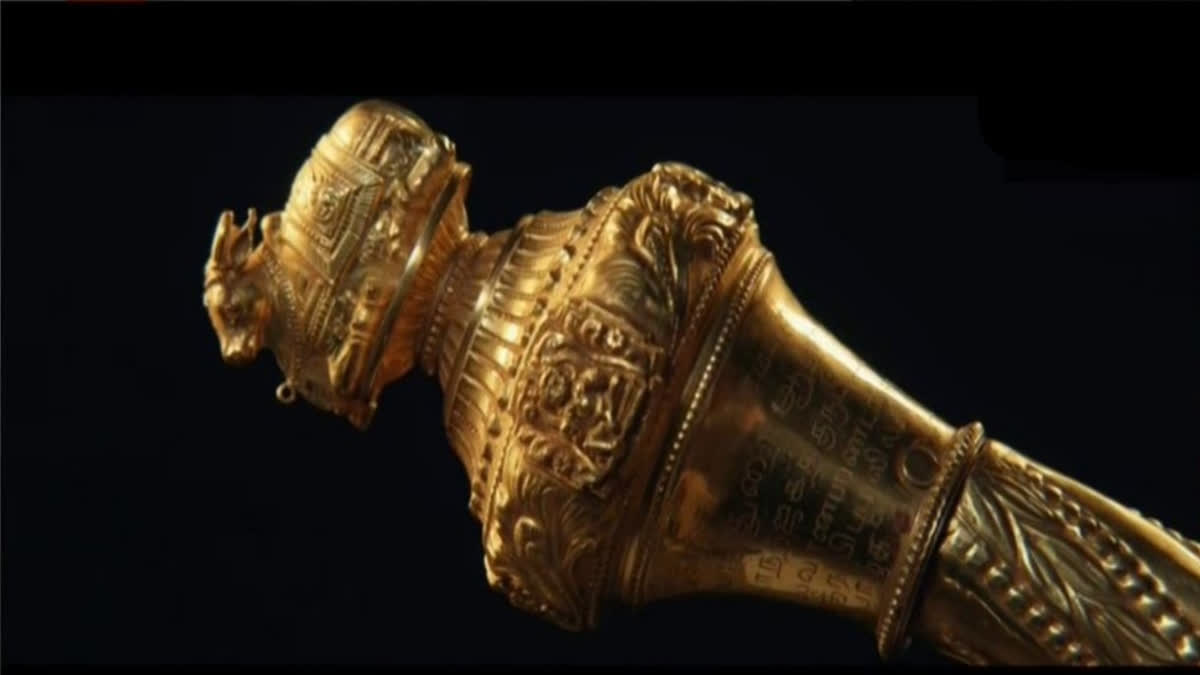Hyderabad: In a momentous occasion set to take place this Sunday, Prime Minister Narendra Modi will mark the inauguration of the newly constructed Parliament building by placing a historic golden sceptre, known as the 'Sengol,' near the seat of the Lok Sabha Speaker. Union Home Minister Amit Shah, in a statement today, emphasized the significance of the 'Sengol' in the history of the nation.
This revered sceptre was originally handed over to India's first Prime Minister, Jawaharlal Nehru, symbolizing the transfer of power from British colonial rule to Indian self-governance. The 'Sengol' is derived from the Tamil word "semmai," meaning "righteousness." It is believed that this sceptre, when conferred upon an individual, carries the profound responsibility of promoting just and impartial governance.
The story behind the creation of the 'Sengol' dates back to a conversation between Lord Mountbatten, the last Viceroy of British India, and Prime Minister Nehru. Mountbatten had inquired about the symbolic gesture that would commemorate India's attainment of independence. Seeking guidance, Nehru turned to C Rajagopalachari, the final Governor General of India, who shared an intriguing Tamil tradition with him.
According to historical accounts, Rajagopalachari informed Nehru about the practice of the high priest presenting a sceptre to a newly crowned king during the Chola dynasty's rule. This tradition was suggested as a way to symbolize India's liberation from British rule. Thus, Rajagopalachari took on the task of procuring the sceptre for this historic momentous occasion.
Also Read: No better place for 'Sengol' than new Parliament: Amit Shah
To arrange the sceptre, Rajagopalachari reached out to Thiruvaduthurai Atheenam, a prominent mutt (monastic institution) in present-day Tamil Nadu. The head seer of the mutt graciously accepted the responsibility. The Sengol was skilfully crafted by Vummidi Bangaru Chetty, a renowned jeweller from Madras, which is now known as Chennai. Standing at a height of five feet, the sceptre features a 'nandi' bull on top, symbolizing justice.
According to reports, a senior priest from the mutt initially handed the sceptre to Lord Mountbatten, who returned it shortly afterward. The sceptre was then ceremonially purified with holy water from the River Ganges before being taken in a grand procession to Prime Minister Nehru. Just 15 minutes before the stroke of midnight, marking India's independence, the sceptre was presented to Nehru, accompanied by a specially composed song celebrating the historic moment.
Home Minister Shah highlighted the fact that the history and significance of the 'Sengol' are not widely known among the public. Therefore, the installation of the sceptre within the new parliament building serves as an attempt to connect India's cultural heritage with its modernity. He praised Prime Minister Modi for his visionary approach in incorporating this symbol into the new parliament, underscoring the government's commitment to honouring tradition while embracing progress.
This golden sceptre, with its rich cultural and historical significance, represents a fusion of India's ancient traditions with its contemporary aspirations, serving as a constant reminder of the country's journey towards justice and fairness in governance.



